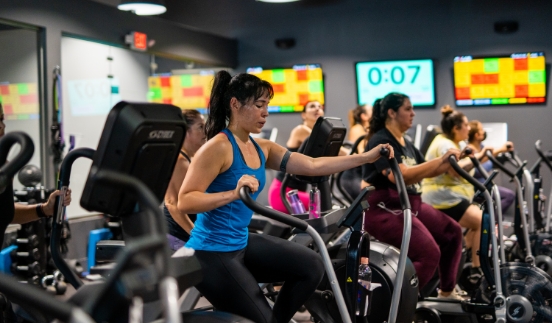Gone are the days of rigid exercise routines dictated by gender norms. Today, women embrace individuality and understand that their fitness journey deserves a personalized approach. It's not always about running faster, lifting heavier, and working out longer. The truth is, the ideal workout duration depends on you.
But how long should you be working out for?
Major health organizations like the American Heart Association (AHA) and the Centers for Disease Control and Prevention (CDC) provide valuable baselines. They suggest a weekly cumulative workout consisting of not less than 75 minutes of vigorous exercises or 150 minutes of aerobic, moderate-level activities. Additionally, they recommend performing bi-weekly strength training routines targeting all major muscle groups.
While these are great starting points for establishing a workout duration, remember that these guidelines can be adjusted based on your particular preferences and circumstances.
What factors influence a woman's workout duration?
Several factors can affect the length of your workout, such as:
Age and fitness level
Beginners can start with manageable 15-20 minute sessions, gradually increasing to 30 minutes as their stamina improves. Intermediate exercisers can explore 30-45 minute sessions incorporating strength training, while individuals with athlete-level abilities might thrive on 45-60 minute vigorous workouts alongside dedicated strength sessions.
Health conditions
Existing health conditions can significantly impact how long and intense your workouts should be. For example, women with joint pains may need to break down their exercises into smaller chunks throughout the day. They can do a 20-minute swim in the morning and a 15-minute yoga session in the evening in place of an hour-long workout.
If you have a health condition, consulting with a healthcare professional is crucial in establishing an exercise plan that is safe and effective while still enabling you to meet your fitness goals.
Pregnancy and postpartum
Motherhood transforms your body and life, requiring adjustments in many areas, including your fitness routine. Here's how to navigate each stage:
- Pregnancy – If you're going through your pregnancy journey, consult your doctor before embarking on a new exercise plan to ensure both maternal and fetal health. Generally, aiming for 30 minutes of moderate-intensity exercise most days of the week is recommended, but the specific type and duration might vary depending on your pre-pregnancy fitness level and any potential concerns.
- Postpartum – Postpartum recovery involves a gradual return to exercise, so starting with short, gentle workouts lasting around 10-15 minutes is recommended. Focus on movements that support your body's recovery and adaptation to the new demands of motherhood, such as simple walks, pelvic floor exercises, and gentle stretches. Then, increase your workout's duration and intensity as you gain more strength.
Menopause and hormonal changes
Stepping into menopause brings a wave of hormonal shifts that impact both physical and mental health. Adapting your workout routine is key during this transition. Postmenopausal women can particularly benefit from incorporating 30-60 minutes of exercises that build bone density into their routine. Additionally, shorter bursts of high-intensity interval training (HIIT) can help boost their metabolism and mood.
Specific goals
Your fitness journey targets play a significant role in determining the duration and type of exercise you should engage in. For instance, if you're focused on building muscle, your workouts will likely need to include 20-30 minutes of strength training exercises at least twice a week. Likewise, if your goal is to lose weight, you may need to include longer durations of cardiovascular exercises combined with a calorie-controlled diet.
Exercise type
Different types of exercise have varying demands on the body, which can affect how long and intense your workouts should be. A 30-minute HIIT session may be more demanding in terms of both intensity and energy expenditure compared to a 60-minute yoga class, which focuses more on flexibility and relaxation.
Time availability
Recognizing the time constraints that many women face is essential in creating a realistic and sustainable fitness routine. Short, intense aerobic workouts can be equally as effective as longer ones. For one, HIIT routines can provide time-efficient solutions without compromising results.
These are just starting points for how long your workouts should be. But beyond the minutes on the clock, remember the importance of listening to your body. Always check for signs of overtraining, such as pain, persistent fatigue, or mental burnout, and adjust your goals as needed.
Train like you, with women like you. Join us today at RZone Fitness all-women's fitness studio. Embark on a journey to health, empowerment, and community. Sign up for our FREE class now!

